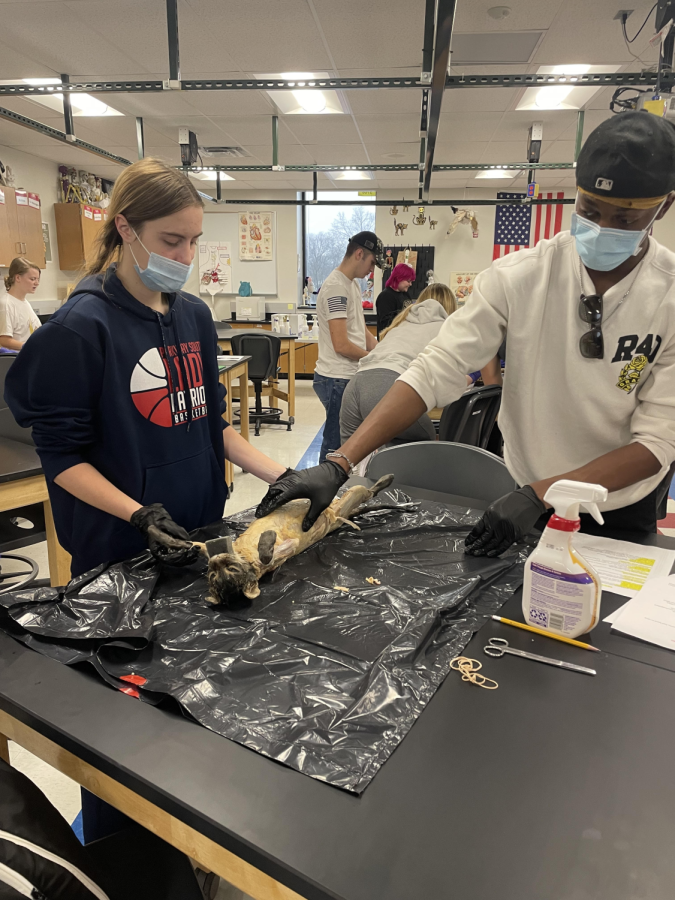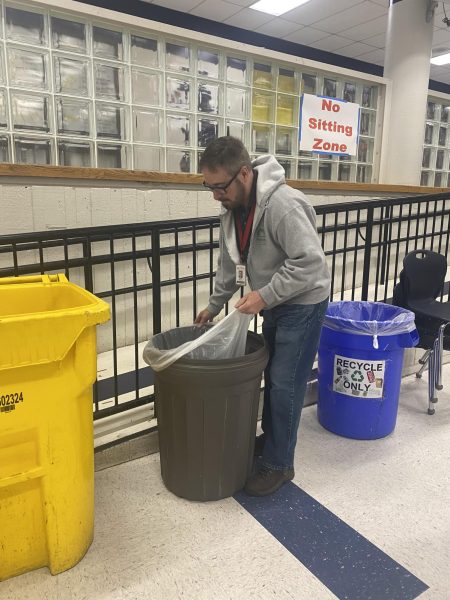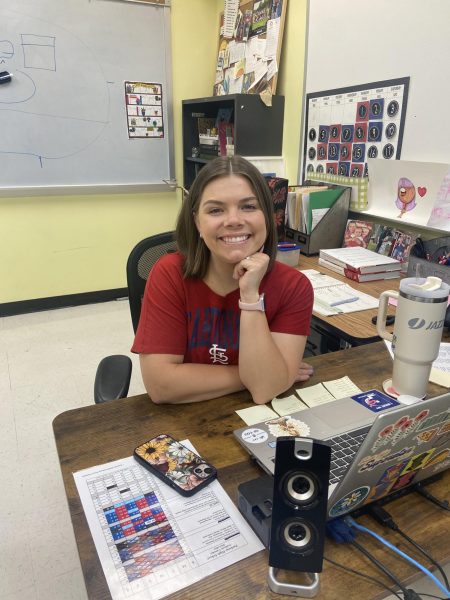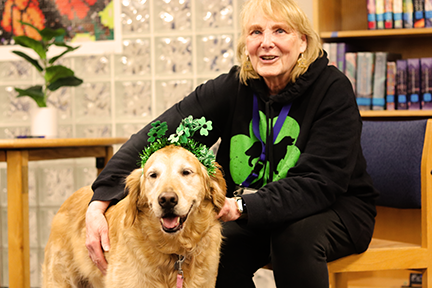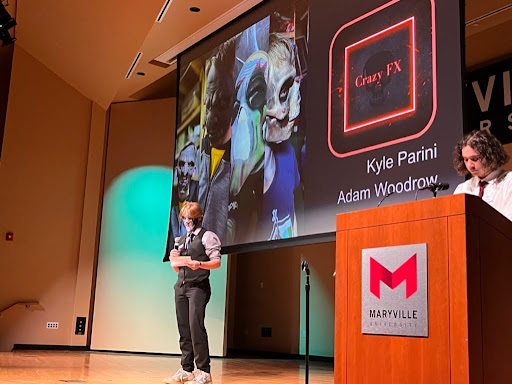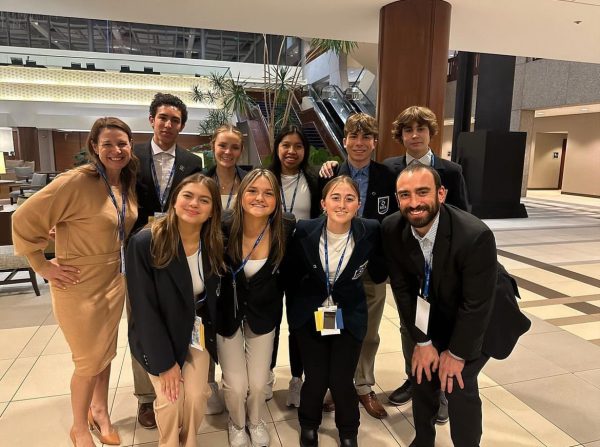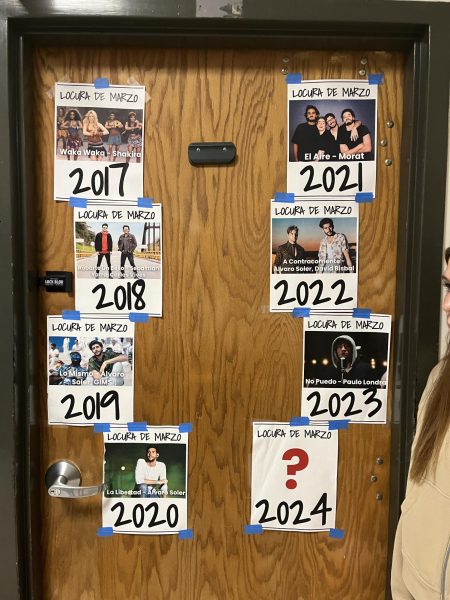Scalpel, please
Dissecting becomes more common as semester nears an end.
Seniors Emme Heimlich and Cameron Moore prepare to cut the stomach of their dead cat open in Ms. Deluca’s Human Anatomy class.
Have you ever walked past the science classrooms and noticed a dead cat laying on the table? With the first semester coming to an end, science classes are starting to dissect more complex animals.
David Smith, junior, participates in dissecting in Dave Richardson’s Zoology class. His class has dissected 7 animals so far.
“We have done earthworms, clams, squid, crickets and grasshoppers. The last big thing we get to do is dissect a turtle which I am really excited about,” said Smith.
Smith adds that dissecting can actually be really interesting.
“I took Zoology because I just needed another science credit. I didn’t expect the class to actually be really cool and exciting. I am learning a lot while being fully interested in the topic,” said Smith.
Dissecting can be disturbing to other students, Smith mentions.
“I was nervous at first to dissect because I thought it would be gross, but I turned out to be fine. Other people in my class do think it is a little gross though,” said Smith.
Senior Emme Heimlich dissects bigger animals in her Human Anatomy class with Katarina Deluca.
“The biggest animal we have dissected is a cat,” said Heimlich.
Heimlich has a different approach to looking at the cat while dissecting.
“It doesn’t make me sad to dissect because I don’t like cats and when I’m dissecting, I forget that it used to be a living animal,” she said.
Dave Richardson, Zoology, Biology, and Anatomy teacher said has been dissecting animals for quite some time.
“I have had dissection in classes since 1992 (30 years),” he said.
With a lot of experience, Richardson said he only sees advantages to dissecting with students.
“[Dissection] helps students learn about comparative anatomy structures of animals, helps them learn how tissues and organs are integrated, and gives students an appreciation of the complexity of organisms in a hands-on learning environment,” said Richardson.
Richardson also explains how every group of students he works with is quite different with their experience. The most memorable time he can recall was in the early 90s, sending a lab to Arizona State University where they expanded the data.
“Students in my anatomy class exposed live rabbits to secondhand smoke and then over a time frame dissected the rabbits to show the difference between healthy and unhealthy tissues and organs. Students in this class helped with developing new experiments for university-level students,” said Richardson.
Where do science teachers get these animals? Richardson explains that absolutely no animals are hunted and killed for dissection.
“Most of the animals are purchased from a company called Ranico in Tucson, Arizona. They are imported mainly from Mexico. Other animals come from the Pacific Northwest (sharks). All animals are feral or an over-population and conservation efforts help maintain a quality population of an ecosystem. The availability of animals changes as the populations change in the world,” said Richardson.
Katarina Deluca, Human Anatomy teacher, mentions that her class dissects cats. Deluca explains that students dissect cats because of the similarities between the human body and the cat’s body.
“Students do enjoy naming their feline friends. This year a lab group found a microchip in their cat’s back! Dissecting is a skill that students perfect as they do. Dissection allows students to appreciate how amazing the human body really is,” said Deluca.
Deluca also dissects sheep hearts, brains, and eyes in her class.
“Dissecting is really an art,” said Deluca.

